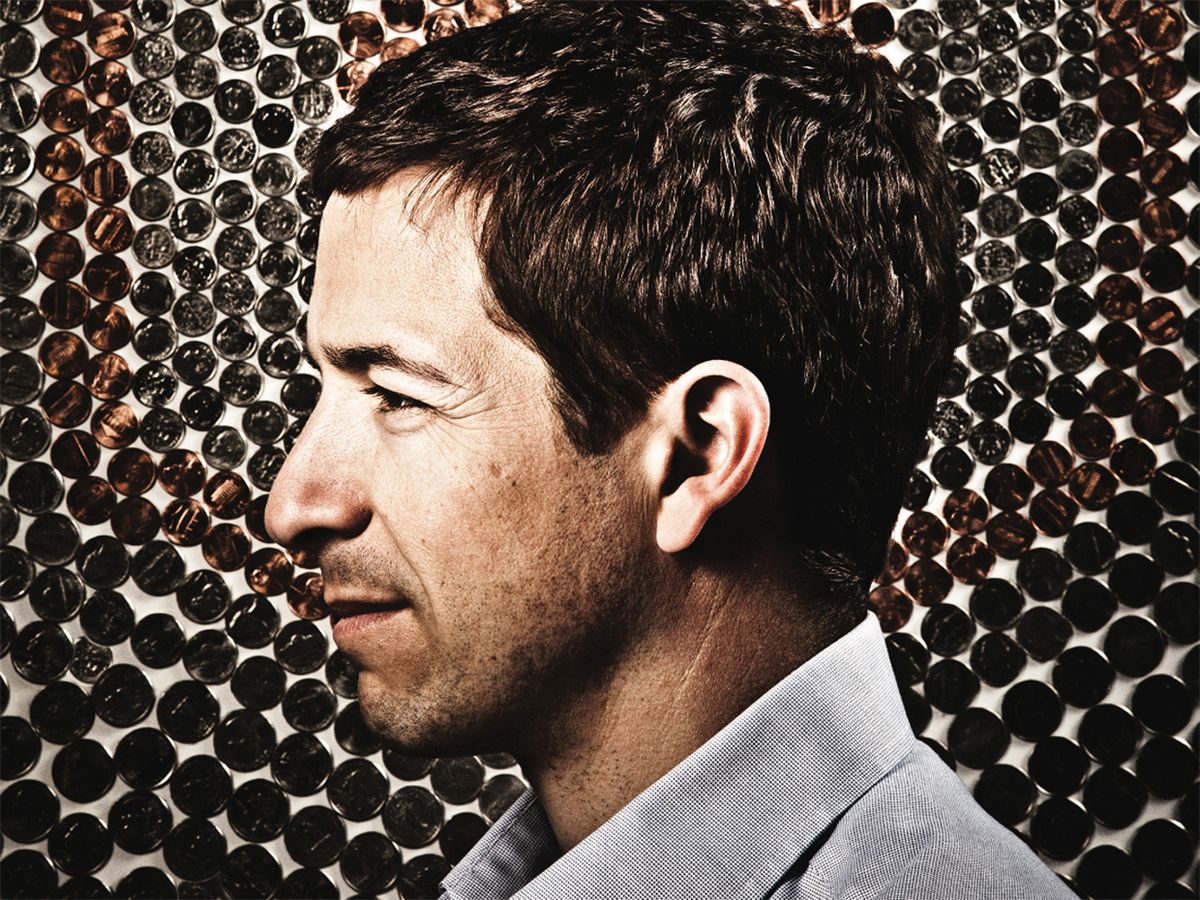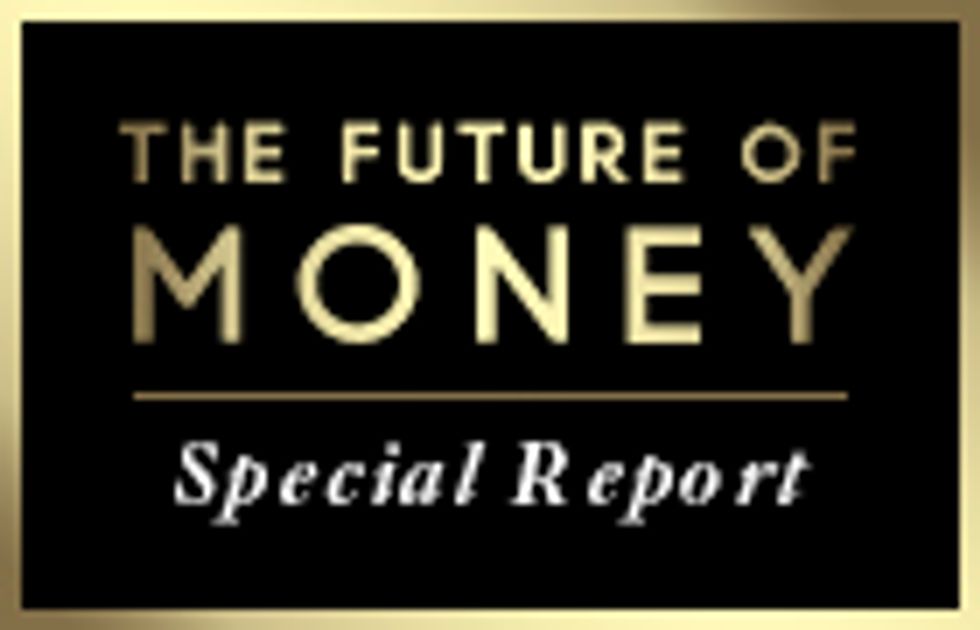My Year Trying to Live Cash Free
Author David Wolman glimpses the all-digital economic future

Not long ago, I was visiting my sister in New Jersey when a last-minute change in plans forced me to hop on a train into New York City without time to prepurchase a ticket. When the conductor came around, I fished my wallet from my back pocket, took out my credit card, and waved it at him.
He glared at me. Then he said two words that made me cringe: “Cash only.”
Normally, that wouldn’t have been a problem. Like most American commuters, I usually keep a few twenties on me for situations like this one, when plastic just doesn’t cut it. But at the time, I was two months into a quest to go an entire year eschewing cash—and I mean not even handling the stuff. I was writing a book on the origins and fate of physical money, and I wanted to get a glimpse of what the cashless future might look like.
Sure, cash used to be king. But no longer. By some estimates, cash transactions account for only 5 percent of the value of all economic activity on the planet, and for good reason. You may think that crumpled euro in your pocket is as cheap to produce as tissue paper and as efficient as a handshake—really, who wants to bother waiting for the taxi driver to run your credit card when you can just slip him a ten? But cash comes with costs that are huge, and often hidden. Not only does anonymous paper money enable criminals like drug dealers and tax evaders, but it also takes an army of printers, inspectors, distributors, security guards, cashiers, armored truck drivers, and ATM repairmen just to keep it all in circulation. In the age of trading stocks with high-tech algorithms and deploying smartphone apps at checkout counters, cash is absurdly analog.
But could we ever ditch bills and coins completely?
At first, my cashless life wasn’t all that different from my normal life. I still did all my major shopping with credit cards, paid my bills online, and deposited payments directly into my checking account using a bank app on my smartphone that lets me carry out a transaction by snapping a photo of a check’s front and back. I steered clear of vending machines, farmers’ markets, street merchants, cash-only restaurants, and coin-operated laundry facilities. Not being the type to wear shoes that need shining, call for a bellman, or buy weed in a back alley, I thought that staying true to my no-cash vigil would be as easy as giving up typewriters or pay phones—and figured it would stay that way.
Before long, however, I began to notice instances in my daily economic life where cash has dug in its heels. At my favorite doughnut shop, I was forced to pay the $2.50 charge minimum for an 80-cent buttermilk bar. While out for a jog, I had to give the same sorry excuse to neighborhood kids selling lemonade for a measly 25 cents a cup. Once, while doing book research, I sat in on a Debtors Anonymous meeting. There I was, the man who snubs cash, surrounded by people who had forced themselves to cut up their credit cards. When the meeting ended, someone passed me a plate for donations. Fingering my lean wallet, I sheepishly passed it on as quickly as possible.
My New Jersey train ride marked a turning point in the experiment. I would like to say I tried to bargain with the conductor—offered to paint his house, say, or give him my watch in exchange for a seat on the train. Perhaps I could have even marshaled some kind of argument about the transit system’s pathetically limited payment options. But in truth the guy was three times my size, and because I knew I still had some dollars sitting untouched in my briefcase pocket, I gave in. As I guiltily examined the change the conductor placed in my palm, it occurred to me that cash isn’t just an anachronism we haul around to make it easier to split a bar tab or pay a babysitter. Every so often, even for a devotedly wired consumer like myself, cash remains a necessity—at least for now.
The real wake-up call came when I took a trip to Delhi. Despite the fact that mobile technology is revolutionizing commerce and banking throughout the developing world, I couldn’t leave the airport without first purchasing a mountain of worn rupees, their very fibers a preview of the dirt and sweat of the megalopolis. Cash may be inching toward obsolescence in wealthier countries, but in India and elsewhere the road to an all-digital economy is much longer. In order to do anything in Delhi—take a taxi, hire a translator, buy a bottle of water—I had to have cash, and plenty of it.
Perhaps I shouldn’t have been surprised to learn that cash still has serious staying power. After all, it is deeply ingrained in our cultures. I’m not just talking about tipping strippers and under-the-table transactions. There is also Hanukkah gelt, offerings left at Buddhist shrines, showers of coins during Persian weddings, and suitcases stuffed with $100 bills in Hollywood heist movies. I have fond childhood memories of saving pennies to buy Bazooka bubble gum or lining them up on the Boston metro tracks, where my friends and I would watch the trains flatten them into shiny pancakes.
Still, I can’t say I’ll miss those jangly metal rounds and pale green slips of paper when they’re finally gone. Now that I’m back to using them in my day-to-day life, they feel filthier and more antiquated than ever. Counting out change just to buy a cup of coffee reminds me that despite my mishaps trying to deal in anything but cash, the real challenge would have been to live a year dealing only in cash. Just imagine trying to pay your mortgage or your taxes with big wads of dough. Cash may still have footholds in some corners of society, but technological and monetary innovations are accelerating its demise. Will we be cashless in four years? Of course not. In 14? One can dream.
This article originally appeared in print as “Cashing Out.”
About the Author
David Wolman thrives on adventure. Once, in China, he talked his way onto a train running on the world’s highest-elevation rail line, the Qinghai-Tibet Railway—before it officially opened. In “Cashing Out,” he recounts another adventure: his attempt to give up cash for a year in preparation for writing his book The End of Money (Da Capo Press, 2012). Wolman is a contributing editor at Wired and writes for The New York Times and other publications.
